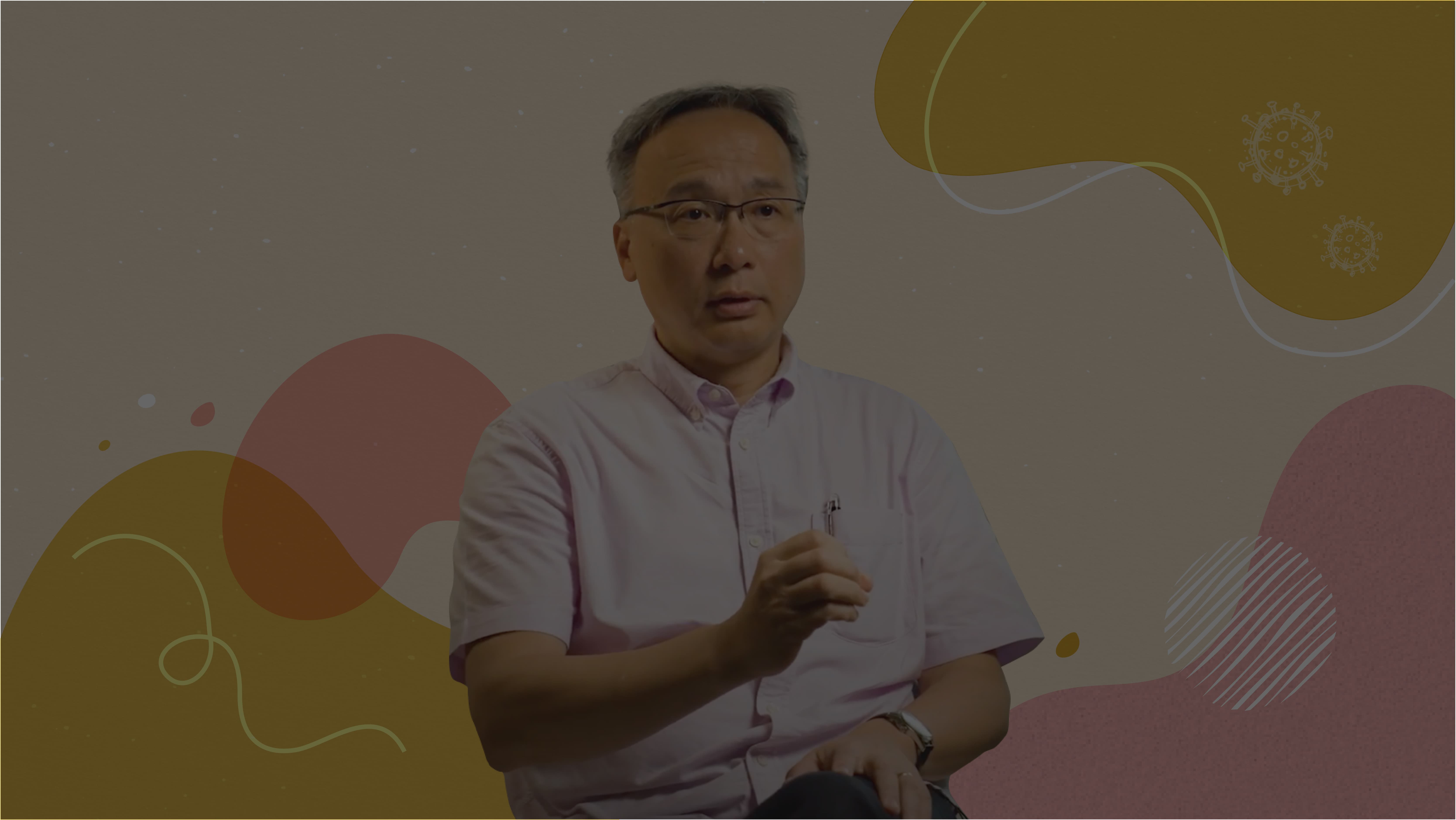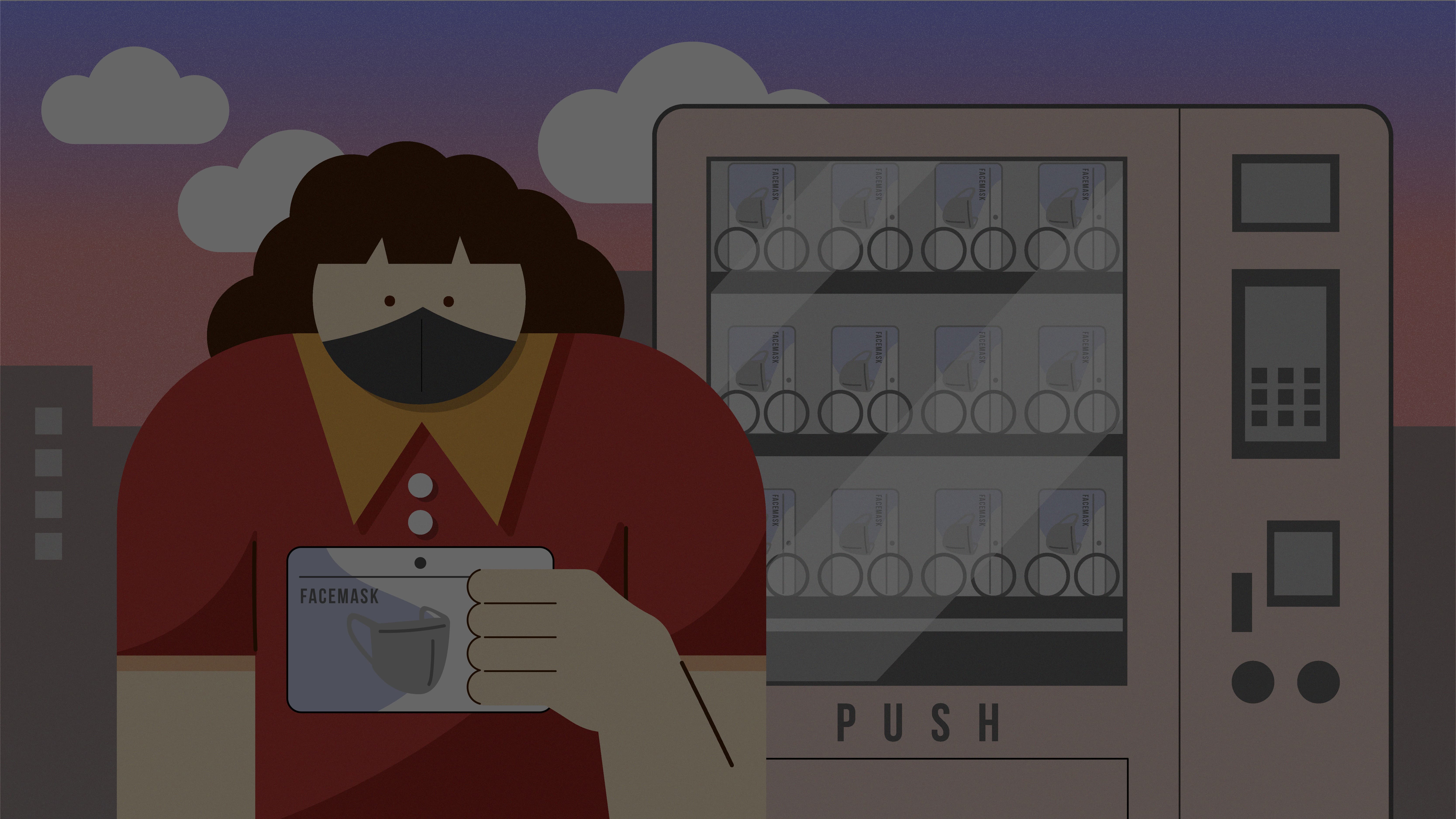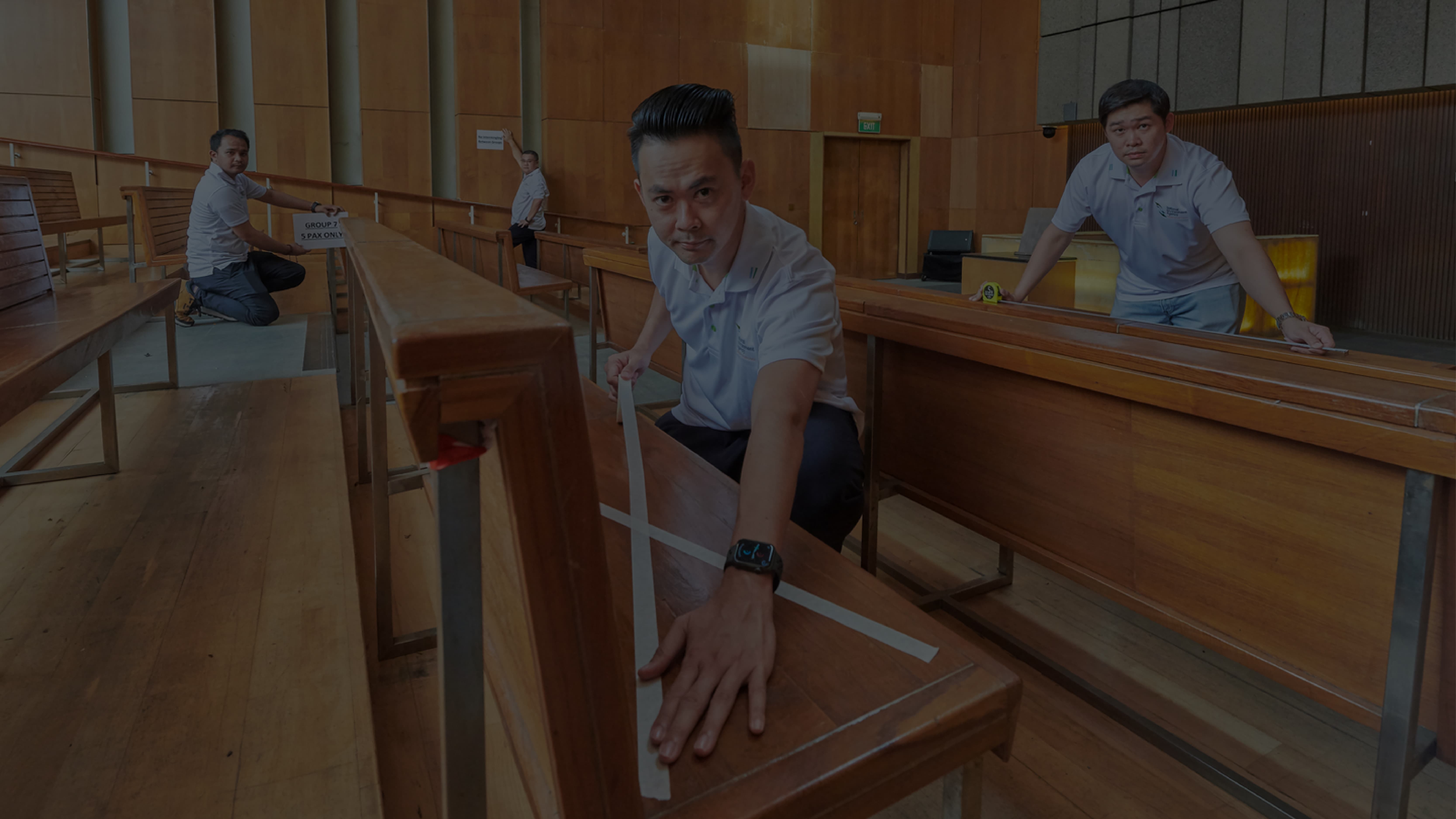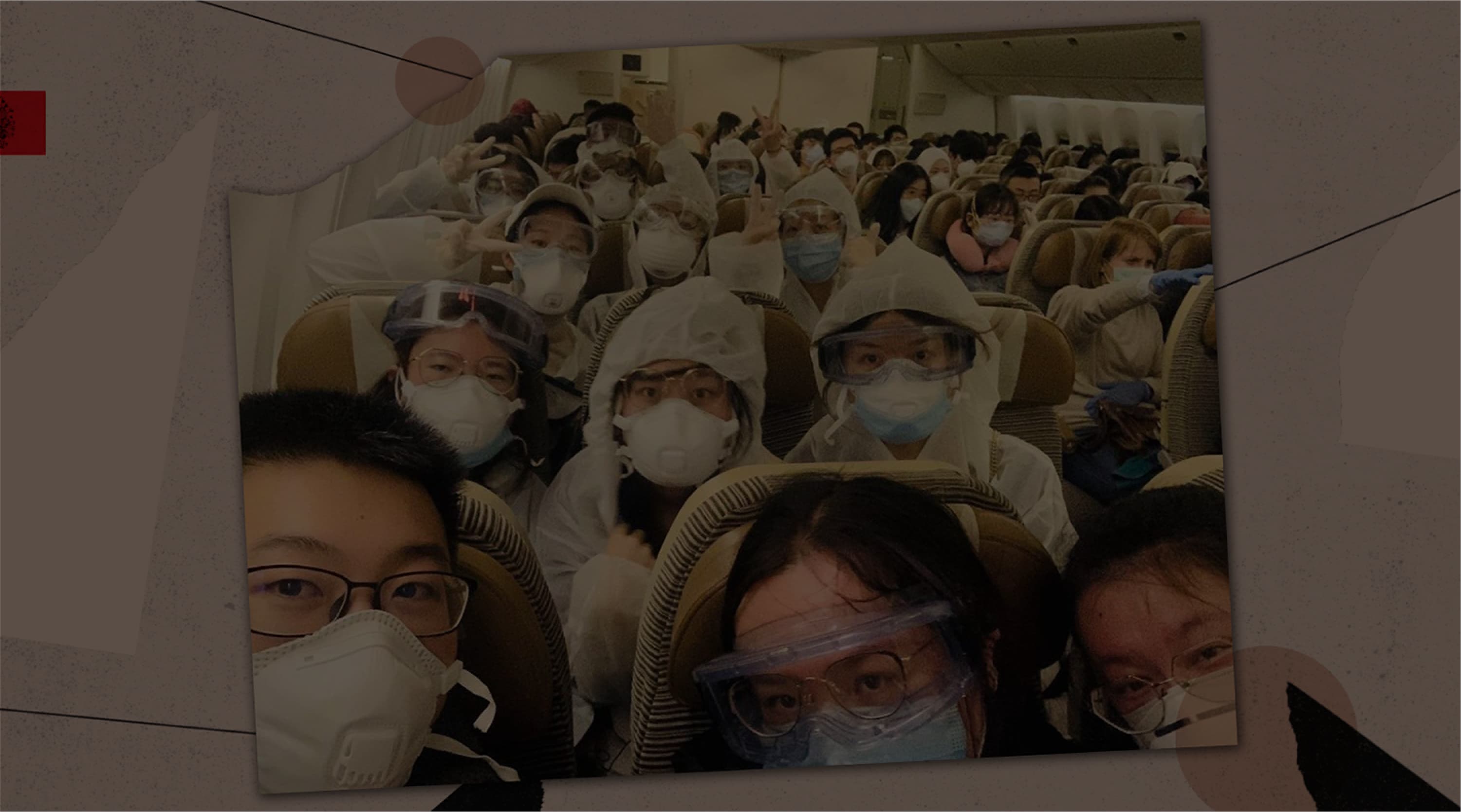COVID-19: Being A Vaccinator While Formulating Health Policies
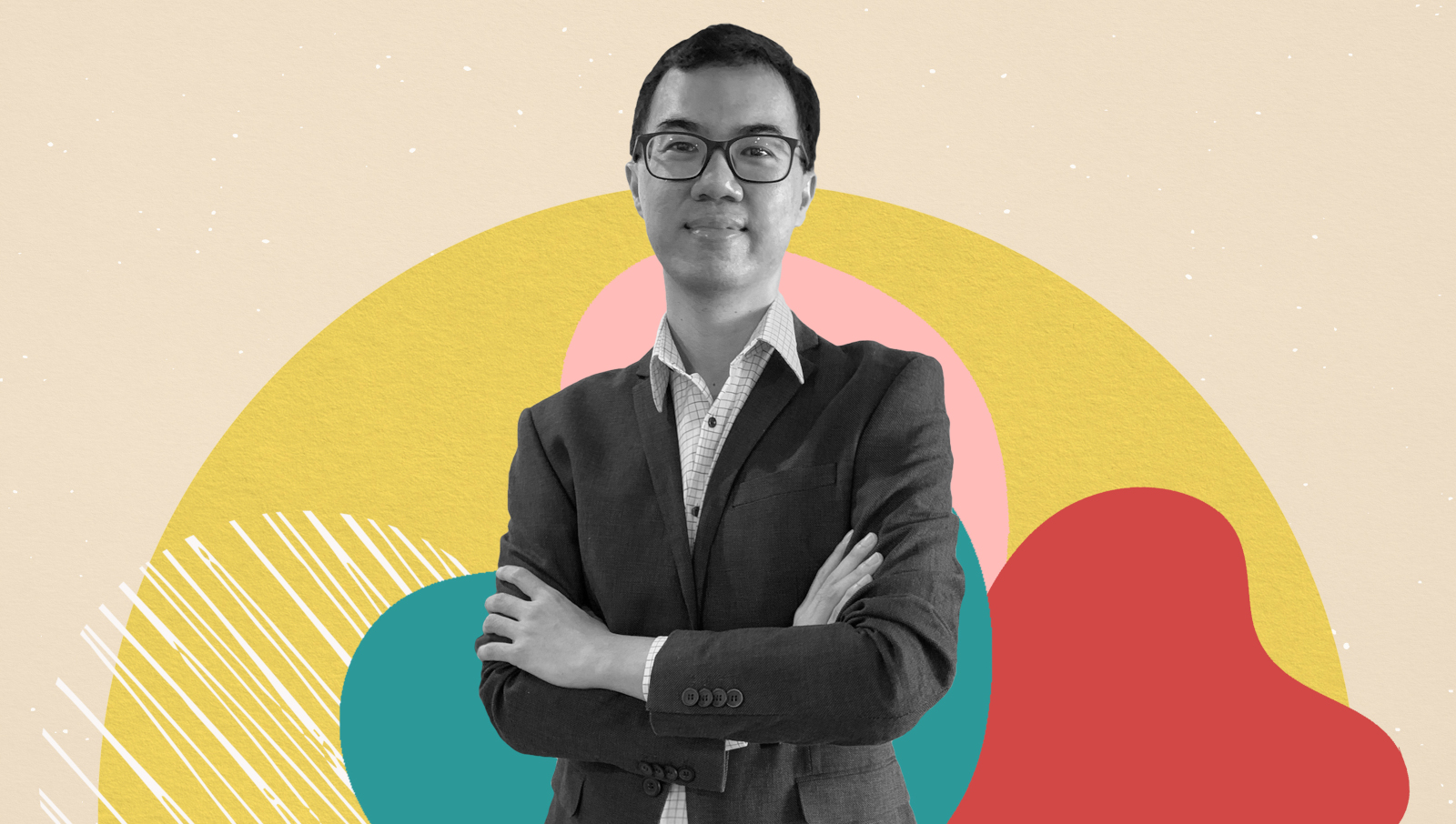
Transcript
Host: Tajuddin Marhim
TAJUDDIN: Welcome to this special edition of the Challenge podcast. I’m your host, Tajuddin Marhim, and I’m a development partner for enterprise services at Enterprise Singapore.
In response to the pandemic, my team and I were tasked to set up the COVID-19 contact centre to address enquiries from businesses and members of the public.
And this edition of the podcast takes a special look at how the Singapore Public Service responded individually and collectively to the COVID-19 pandemic, and the lessons we learnt along the way.
For this series we will be speaking to some officers who have contributed in one way or another to ensure the health and safety of every person in Singapore.
TAJUDDIN: In this episode, we are speaking with Jay Lee. Jay is a policymaker at the Ministry of Health or MOH, and a locum nurse at the COVID-19 vaccination centre.
Challenge finds out how his experience in policymaking, and on-the-ground vaccination stints have complemented each other, and the kind of impact it has had on him.
Thank you so much, Jay, for joining us today. Let's start by getting to know you a bit better. Could you share with the audience – what do you do at MOH?
JAY: Hi Taj. Being in the Primary and Community Care division in the Ministry of Health, MOH, I've worked closely with our key stakeholders, such as the general practitioners and polyclinic clusters in formulating and reviewing Primary Care policies.
Primary Care is the first line of care in our healthcare system, it involves our polyclinics and GP clinics in our community, and they are the bedrock of a healthcare system. So, it’s often the first touch point for Singaporeans.
Our overarching vision is Primary Care for the entire family from cradle to grave. So I was involved in the implementation of the Primary Care networks.
Besides my current business-as-usual work, which involves capacity and service planning of polyclinic developments, I've also supported the implementation of the COVID-19 Swab-and-Send-Home and vaccination workflows at polyclinics.
So given that Primary Care is our first line of defence, it is critical for us to provide the appropriate resourcing to our stakeholders. My role as a locum nurse is to bolster the role against the fight against COVID-19.
TAJUDDIN: Jay, you mentioned that you are a locum nurse at the vaccination centre. How did you get involved in that side of the operations coming in from the policy side, which is what your day job is?
JAY: I was involved in the initial discussions with our various stakeholders on the proposed manpower staffing of the vaccination sites, mainly the vaccination centres, polyclinics and mobile vaccination team.
One key takeaway was the urgent need for trained vaccinators, mainly from the current practicing nurses, former nurses or medics to bolster and augment our COVID-19 vaccination operations.
I told myself that this was an opportunity to contribute my skillsets. At the time, there was actually a call by the Singapore Healthcare Corps, which was set up to support our healthcare workforce in the fight against COVID-19. They were calling for former and current healthcare professionals to provide additional support in COVID-19 operations. And that's when I stepped in to help.
TAJUDDIN: What were the necessary skillsets for you to qualify as a vaccinator?
JAY: One needs to be either a currently practicing nurse or former practicing nurse, or a former or current medic, or it can be also be any healthcare professional such as doctors, dentists, pharmacist. You would just need to go through on-the-job training to be able to administer vaccinations safely to the outpatients.
TAJUDDIN: Was this something that you had experience in, prior?
JAY: Before joining MOH, I had prior experience in administering adult and childhood vaccinations as a senior staff nurse in the polyclinics.
So, although primary care nurses play multitude of roles such as health counselling, wound dressing… one of the roles I enjoy was interacting and conducting childhood developmental screenings, as well as vaccinations for neonates. It is one of the more challenging, but actually very rewarding, roles when you see the child progress over the years, given that the patients tend to stick to the same primary care provider.
I honed my skills of vaccinations at the polyclinics and that's when I decided to step in to serve the public at vaccination centres.
TAJUDDIN: Of course, this is a very much a volunteer role, and I would assume that this was definitely something you did out of your regular working hours. Am I right?
JAY: Yes, this was done during my free time during the weekends, or sometimes public holidays, but not every weekend.
TAJUDDIN: So given that you would have to spend potentially some time away from work, how would you say your team or your bosses supported you, as part of this volunteer exercise?
JAY: My reporting officers and bosses together with my family members and friends, they were very supportive of my role as a locum nurse at the vaccination centre.
This voluntary role or, I would say, concurrent appointment holders to other COVID-19 operations is pretty common in MOH. We have several of our colleagues also deployed and also playing a vital and contributing roles in various COVID-19 operations such as the quarantine operations or the home recovery operations.
TAJUDDIN: Would you like to share with us where were you assigned, or any of the interesting interactions you might have had with Singaporeans who came to get vaccinated by you?
JAY: As part of the call for Singapore Healthcare Corps, I signed up with MinMed group in early March 2021, and was assigned to one of the four vaccination centres, mainly Toa Payoh West CC, Hougang CC, Serangoon CC and Kolam Ayer CC.
We are able to select the preferred location and this gives me the opportunity to learn and administer both Pfizer and Moderna vaccinations depending on the VCs that I’ve chosen, and been rostered to. The VCs are open from 8am to 9.30pm. We are allowed to select both either the morning shifts, or the afternoon shifts.
This vaccinator role allowed me to meet and interact with individuals from all walks of life from various ages from primary school kids, age 12, to 100 years old, as we've progressed to different age bands for the primary series of COVID-19 vaccinations.
Similarly, I get to work with a diversified pool of staff at the vaccination centre. And of course, despite seeing different faces at each time, everyone's also very united and dedicated in fulfilling their tasks and ensuring that our patients undergo very smooth and efficient process for vaccination.
TAJUDDIN: Were there any incidents, Jay, where someone who was coming to get vaccinated was worried? And how would you comfort them?
JAY: It's pretty common to hear patients being fearful of needles, as well as having anxiety before the vaccination. I think it's also partially due to probably childhood experience during vaccinations or seeing the long needles and trying to visualise whether the whole needle will actually stick to the bone.
Nonetheless, our role is to reassure the patients and let them know that it's actually a very swift and just some mild pain during the vaccination process.
Dispelling myths is also one of the pretty common topics during my interactions with the patients at the vaccination centre, so beyond just reassuring the patients that as the side effects are mild or moderate, and you usually will get better within a few days.
I’ve also encountered scenarios of seniors who may ask certain questions such as, if showering after vaccination is allowed, or if they can actually rub or massage the injection site to reduce the chances of swelling, or to dissipate the vaccination to other parts of the body quickly. These are pretty common topics that I've encountered.
There are actually no restrictions for showering after vaccination. And there's no need to rub or massage the injection site, although moving your arm actually may help to reduce stiffness.
TAJUDDIN: Being a locum vaccinator, you're not just there to provide the vaccination, you do also provide some support for those who are anxious, and also helping to dispel some of the more common myths that we've just learnt about today.
So with booster vaccinations now being rolled out, are you still volunteering as a vaccinator?
JAY: Yes, with booster vaccination now extended to individuals 30 years old and above for the members of public, there is actually a spike in demand, and hence the need for nurses or vaccinators to contribute in the booster vaccination operations.
Although I've worked once or twice a week, during weekends, I've pretty managed to vaccinate almost 2500 individuals since March. Once in a while, I might also meet patients who could recall that I vaccinated them for their previous dose.
TAJUDDIN: Well, I think if I had not gotten my vaccination, I would definitely want Jay to help me out with that. (JAY: That’s great to hear!) Seeing how, you know, Jay's a very comforting person in that way.
You've said a lot about how much time you've spent in this volunteer effort, especially on weekends, and at times, public holidays. Then how does Jay take care of himself then?
JAY: Given the flexibility of the vaccination role, we can select our shifts in advance and thus I was able to make prior arrangements for any family or social gatherings. The vaccinations centre also calibrate their manpower needs based on the demand.
In addition, as we have also accumulated a fair number of annual leave days, I will occasionally clear some leave in between work days, to take a break as part of self-care. A break is important to recharge our body and mind so as to refocus our attention, especially if one experiences brain fog.
TAJUDDIN: And I believe that's very good advice for anybody, you know, to also take a break, as, and when they can.
You mentioned that you were a former nurse. And now you have gone on to become a policymaker at the MOH. What made you want to take that move from the nursing profession to now being a policymaker?
JAY: My motivation in choosing nursing was the ability to make a significant positive impact on patients in need, and having opportunities to empower our patients and their families with knowledge.
So our role as nurses was to advocate for my patients and provide the quality of care I’d want if I were in their shoes. The nurses cared for me when I was hospitalised when I was young, and played a pivotal role in me choosing a healthcare career in the future.
Nursing is definitely a rewarding and fulfilling role for me. As nurses, we have the privilege to build deeper connections and interact more with our patients. And I find it very rewarding.
I subsequently moved from the clinical and ground operations side at the polyclinics to the policy and service planning side at the MOH. This shift allows me to better appreciate and help to formulate and review policies that benefit not just at the individual, but at a national and community level.
TAJUDDIN: With your on-ground experience as a locum vaccinator as well as your day job as a policymaker, how would you say your volunteer experience has influenced what you do on a day-to-day basis, or vice versa?
JAY: My role as a vaccinator has given me opportunities to walk the ground, and be able to hear direct feedback and explain and clarify policies on the ground. And it also enables me to encourage the patient and their family members to be vaccinated once they are eligible, especially during the earlier phase of the national vaccination programme.
TAJUDDIN: Were there any periods in time when there were surges at the vaccination centre, people like suddenly turning up saying, all of us want to get vaccinated?
JAY: Throughout the vaccination experience, when we started off vaccinating seniors at the early stages in January or February, we started seeing more individuals streaming in, especially after each MTF announcement.
Our vaccination centres are well equipped to accommodate as many patients as possible. At the peak, certain vaccination centres are vaccinating up to 3,000 individuals a day.
And with the move to encourage more seniors as well as the members of public to be vaccinated, there was a shift in policy of which walk-ins were allowed. We started to see an increase in vaccination uptake. But then there was also some uncertainty on the numbers of who are coming in for vaccination.
TAJUDDIN: When you say uncertainty in terms of numbers coming for vaccination, what do you mean by that?
JAY: So as part of the vaccination process, some of our colleagues who are doing the dilution role, they will need to prepare the vaccinations in advance. This includes thawing the vaccines, as well as extracting the vaccines into the pre-filled syringes. And this has to be done some time before the vaccination administration process. So if all cases were appointment cases, we are able to better calibrate the number of vaccines to thaw.
TAJUDDIN: What would you say your biggest challenge has been as a locum vaccinator throughout this whole period?
JAY: The biggest challenge I face was administering vaccinations for the younger age groups, comprising around 12 to 14 years old. At that age, one tends to be more fidgety and sometimes slightly uncooperative.
Hence, we will need their parents’ consent as well as their assistance in terms of the distraction techniques as well as to engage them during the vaccination administration process. What we usually do is to reassure the child that this is a very swift and just a mild pain process, just an ant bite. And we'll be done with it within seconds.
TAJUDDIN: Would you like to share some of the distraction techniques that you used?
JAY: Usually I'll ask them to look away and face the opposite side. Or, if their parents are holding any iPads or phones, to engage them with games or any visuals. And interestingly, some teenagers automatically put on their earphones and blast their music during the vaccination process.
TAJUDDIN: That's really interesting, the ways that people will try to distract themselves from the very, very minute pain of taking a vaccination. Was there anybody who like recorded it to put on social media? In other countries, that's what people like to do, you know, having the vaccination experience recorded.
JAY: Occasionally, I'll get a couple of requests to film the vaccination process. This includes taking selfies or their family members taking the entire vaccination process. I think it's a way to encourage individuals to be vaccinated, to share the experience on social media.
TAJUDDIN: Throughout this whole experience, it seems like it was a very positive and wholesome experience for you. What other lessons did you learn from this, and what are some of the things that you’ll take away from the whole journey?
JAY: I've learnt that some issues might be intuitive to one, but might not be intuitive to others. I've encountered individuals who told me that they were not aware that they could remove the plaster within hours. So what I see as very logical to most of us, to remove the plaster after vaccination, I realised it might not be apparent, and hence, I will reinforce this message across to my patients, coupled with other general advisories.
Most importantly, I felt that it has been very fulfilling to serve as the frontline staff for the past seven months, as well as play my part towards contributing to the defence against the COVID-19 pandemic.
TAJUDDIN: I personally myself, Jay, would like to thank you for your time and for your effort in this whole vaccination programme, because it takes people like you to really step up.
Before we end, maybe you'd like to say a few words to your fellow peers and colleagues who are still on the frontlines, still serving COVID-19 patients, as they continue with this very, very important duty of theirs.
JAY: Stay strong and always remember why we are doing this role for Singapore, in our fight against contributing to the defence against COVID-19.
TAJUDDIN: Thank you so much, Jay. And also to all our frontline healthcare workers, a big thank you to all of you for your service as well.
JAY: Thank you Taj.
TAJUDDIN: Thank you for listening to this podcast. I’m your host, Tajuddin Marhim. For more stories on the Singapore Public Service’s COVID-19 response, go to psd.gov.sg/challenge

To hear more conversations like this, follow the Challenge Podcast on Spotify.
- POSTED ON
Jul 6, 2022
- TEXT BY
Keval Singh
Siti Maziah Masramli




